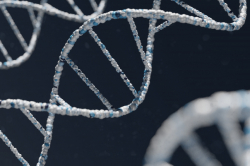Key component of quantum computing invented. A team at the University of Sydney and Microsoft, in collaboration with Stanford University in the US, has miniaturised a component that is essential for the scale-up of quantum computing and coined a microwave circulator. The work constitutes the first practical application of a new phase of matter, first discovered in 2006, the so-called topological insulators. Beyond the familiar phases of matter - solid, liquid, or gas - topological insulators are materials that operate as insulators in the bulk of their structures but have surfaces that act as conductors. Manipulation of these materials provide a pathway to construct the circuitry needed for the interaction between quantum and classical systems, vital for building a practical quantum computer.
Robot learning improves student engagement. A study of Michigan State University's pioneering robot-learning course shows that online students who use the innovative robots feel more engaged and connected to the instructor and students in the classroom. Stationed around the class, each robot has a mounted video screen controlled by the remote user that lets the student pan around the room to see and talk with the instructor and fellow students participating in-person.
Ultrasound needle to transform heart surgery. Heart tissue can be imaged in real-time during keyhole procedures using a new optical ultrasound needle developed by researchers at UCL and Queen Mary University of London (QMUL).The revolutionary technology has been successfully used for minimally invasive heart surgery in pigs, giving an unprecedented, high-resolution view of soft tissues up to 2.5 cm in front of the instrument, inside the body.
New software can verify someone’s DNA in minutes. Researchers at Columbia University and the New York Genome Center have developed a method to quickly and accurately identify people and cell lines from their DNA. The technology could have multiple applications, from identifying victims in a mass disaster to analyzing crime scenes.
DIY: How to build a smartphone microscope. University of Houston researchers have released an open-source dataset offering instructions to people interested in building their own smartphone microscope. Their process demonstrates that a basic smartphone equipped with an inexpensive inkjet-printed elastomer lens can be converted into a microscope capable of fluorescence microscopy, able to detect waterborne pathogens and perform other diagnostic functions.




